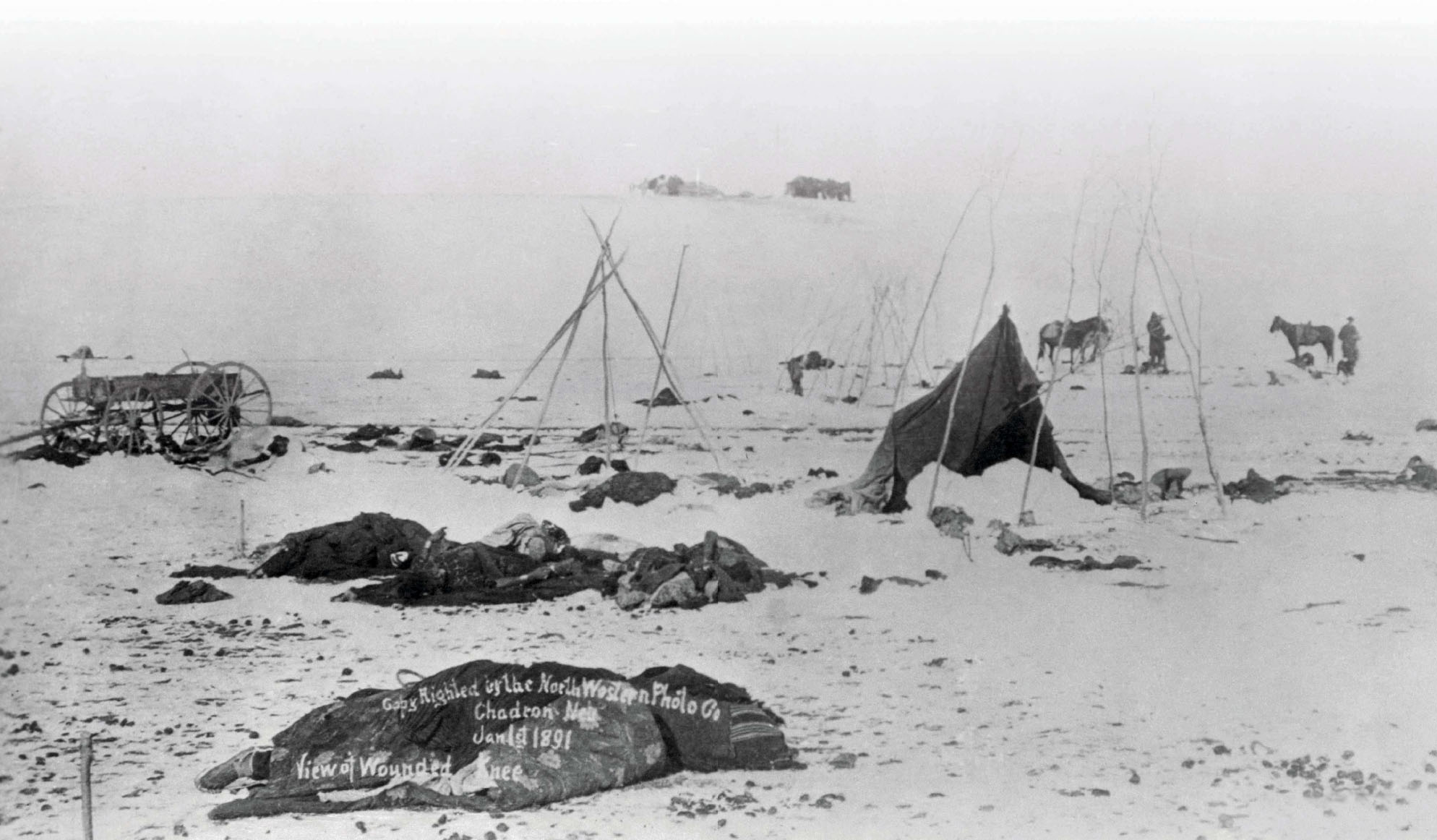
Men, women and children of the Lakota Sioux litter the ground of their own camp after the slaughter
GETTY
Daniel F Royer was a nervous man. It was November 1890 and as the newly appointed agent on the Pine Ridge Indian Reservation in South Dakota, he was the representative for the US government’s dealings with the Lakota Sioux living there. Royer had little experience for the job and even less understanding of the ways of the Sioux peoples. They took to calling him ‘Young Man Afraid of Indians’. Royer had hoped to improve the lot of the Native Americans by encouraging them to adopt the ways of the White Man, going so far as to bring his nephew in to teach them baseball. But an increasing number of the Sioux favoured a very different – and to Royer a very worrying – path to salvation: the Ghost Dance.
These were desperate times for the Lakota Sioux. The relentless westward march of white settlers had seen them driven from their traditional hunting grounds onto reservations, and the bison, vital to their way of life for the hides and meat, had been hunted virtually to extinction. The US government made them sign treaties to limit their freedoms and then broke them with impunity. In 1889, they engineered the dismemberment of the Great Sioux Reservation, which covered the western half of South Dakota, in order to give approximately half the land to whites. The Lakota were left with just six smaller reservations. There was little to hunt, the soil was poor for farming and matters were made worse when the authorities miscalculated the additional supplies needed to survive the winter.